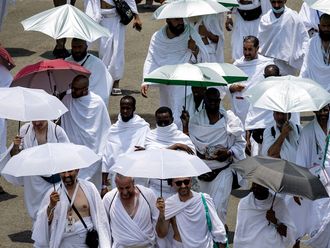
Dubai: The National Centre of Meteorology in Saudi Arabia is exploring a new strategy to mitigate the extreme heat experienced by pilgrims during the annual Hajj pilgrimage by potentially employing advanced weather modification techniques.
Dr. Ayman Ghulam, CEO of the centre, unveiled this innovative approach during a workshop on climate impact for the upcoming Hajj season.
With temperatures at the sacred sites projected to soar to around 48 degrees Celsius, along with low humidity and limited cloud cover, the initiative aims to utilise advanced rain enhancement techniques to create a more comfortable environment for the millions of pilgrims. The research involves investigating methods to influence weather patterns, potentially including cloud seeding or other forms of intervention to promote cloud formation or precipitation.
While the precise details of the strategy are still being studied, the aim is to harness meteorological phenomena to moderate the temperatures and improve conditions for pilgrims.
This initiative represents a significant step forward in the practical application of climate control technologies in the region.
The centre’s cloud seeding programme has garnered attention both nationally and internationally, with other countries expressing interest in adopting similar strategies.
Dr. Ghulam also highlighted the expansion of meteorological services at the holy sites, including enhanced radar and satellite imaging capabilities to ensure accurate weather forecasting.






